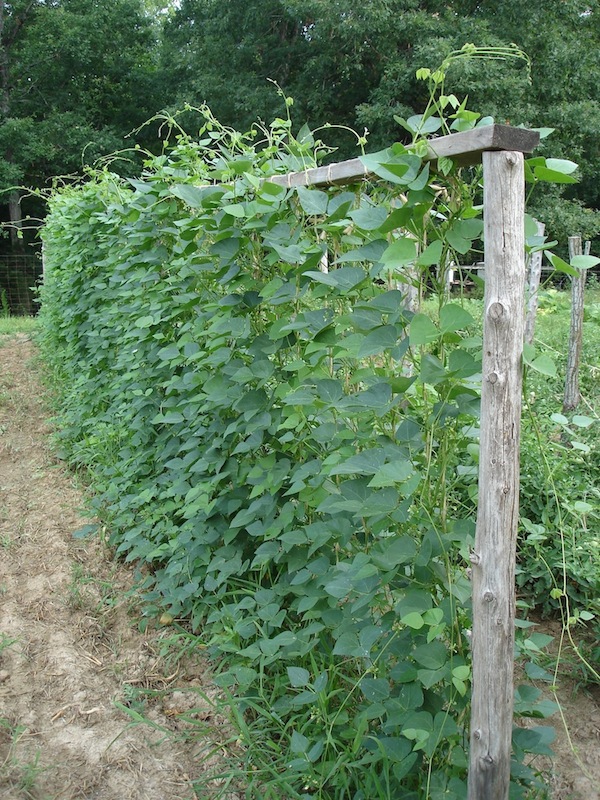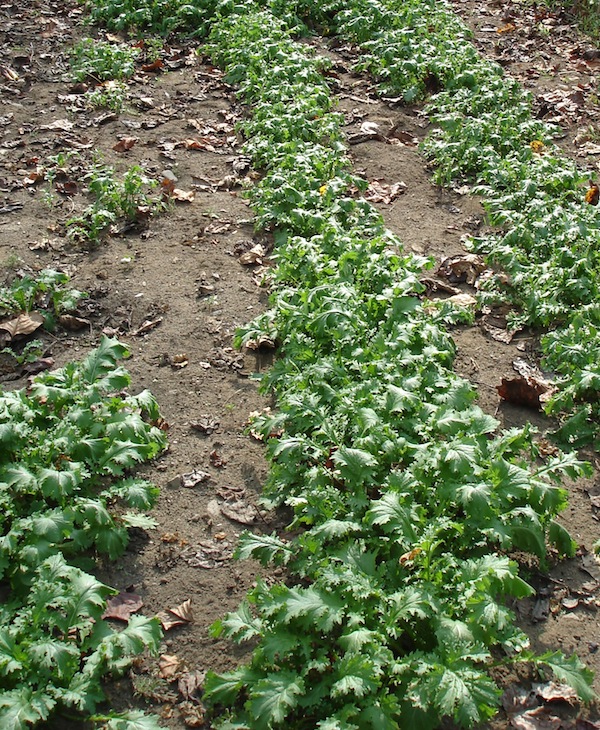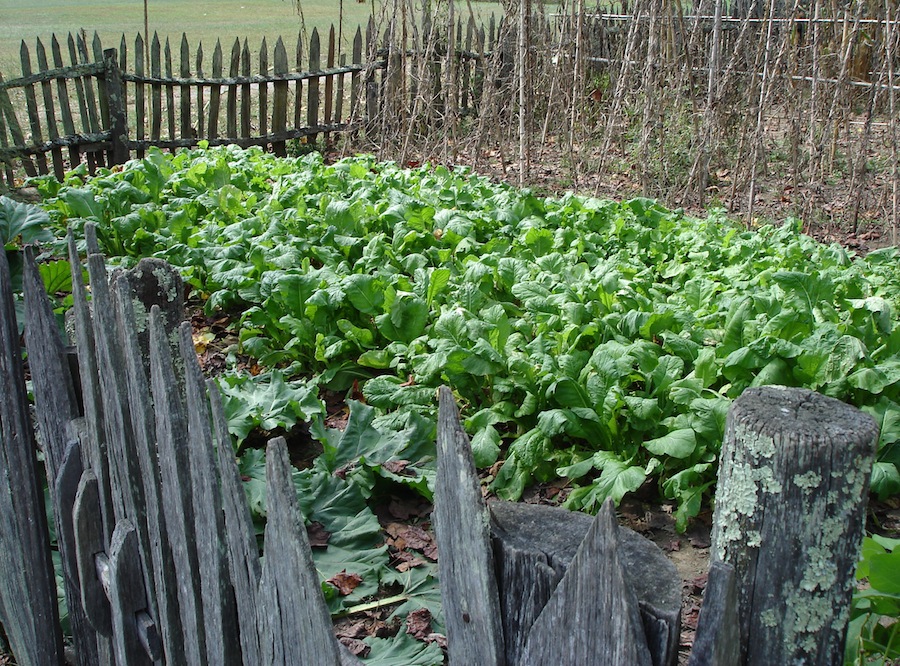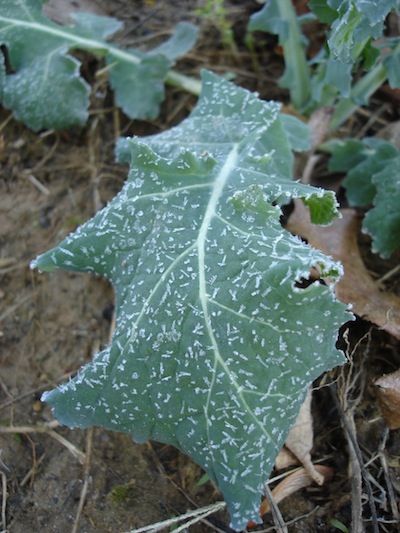
Pole beans with good, sturdy horizontal support are just a bit easier to protect from frost
Pole Beans
Beyond the sprinkler method I mentioned in the previous post last week, not much will protect late planted bush beans from frost (because there’d be too many of ’em to protect without too much effort or materials), but as for pole beans that are still putting out pods, this is kind of simple: Take long sheets of clear plastic and cut them so that they are approximately 4 or 5 feet wide and as long as your row of pole beans you want to guard from frost. Drape the long plastic covering over the top of the row so that half falls on one side and half on the other. Don’t go too crazy with a lot of plastic left to catch the wind; you’re not sailing a ship. Just use enough to shield approximately the top 1/3 of all of the plants. Whatever pole structure you use for the bean vines is what’s holding and supporting the plastic sheeting. This will provide some protection against frost while still allowing much rain to fall at the base of the plants. But timing is everything; only try put this plan into action when you’re right up against a possible frost and cooler temperatures. If you’re experiencing an indian summer, it could be too much heat. Also consider this: Pole beans planted near a building or deck are usually a bit less vulnerable due to the natural shielding of the structure they are growing up. This could be a word of advice spoken a bit late, but think about it again when planting time comes next spring.
Greens
If there are any areas in the garden that are still yielding produce in the weeks leading up until frost time, consider sowing turnip, radish, or even broccoli seed right there in the “middles” (where you walk) and/or between the plants themselves. As the young turnip or radish plants begin to grow, they will keep the weeds choked out around the other crop that’s nearing the end of its growing cycle. This helps you in two ways: an early end to the season’s weed battle, and a little fresh variety to autumn meals (three ways…if you pitch a few garden scraps to the rabbits or cows every now and then). In fact, I like sowing radishes between larger plants within a row all season long—every couple of weeks. It keeps me eatin’ fresh radishes, and helps “live mulch” the other plants beside it.

Radishes or greens planted among other vegetables in late summer have the row all to themselves come fall

Mouth waterin’

Frost on the pumpkin…I mean turnip green
My mama always said that turnip greens taste best after a good frost hits ‘em. In our southern winters, greens can take just about whatever the weather throws at them, even snow or ice; still, you can try to cover a small bed of ‘em with an old tarp or something if accumulation is in the forecast. They’ll probably survive quite well beneath five inches of snow, but greens ought to be picked, not dug. It’s just the principle of the thing.
Basically, the guiding principle in prolonging plant production is protection—protection from the elements of winter that are deadly to warm weather plants. By the time Jack Frost is knocking on your garden gate, you’ve hopefully already canned or frozen lots of good eatin’ for winter meals. But a bit of extra effort at seasons end can keep you harvesting fresh pods, fruits, or vegetables as long as possible…delaying the opening of that first sealed mason jar.
(An altered version of this article was written by Pa Mac and first published in a 2007 issue of Tennessee Gardener Magazine, excerpted here with permission courtesy of State by State Gardening)

